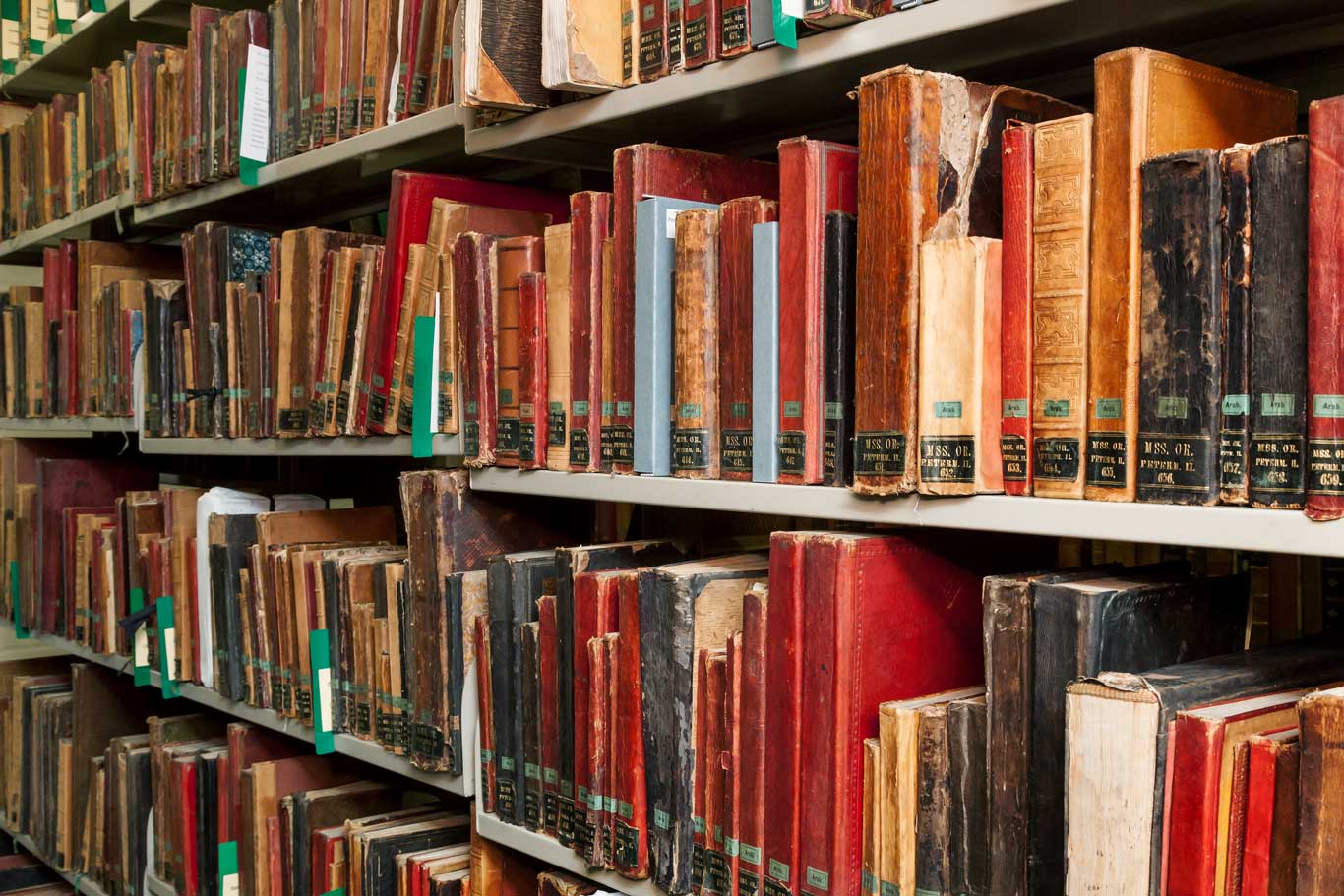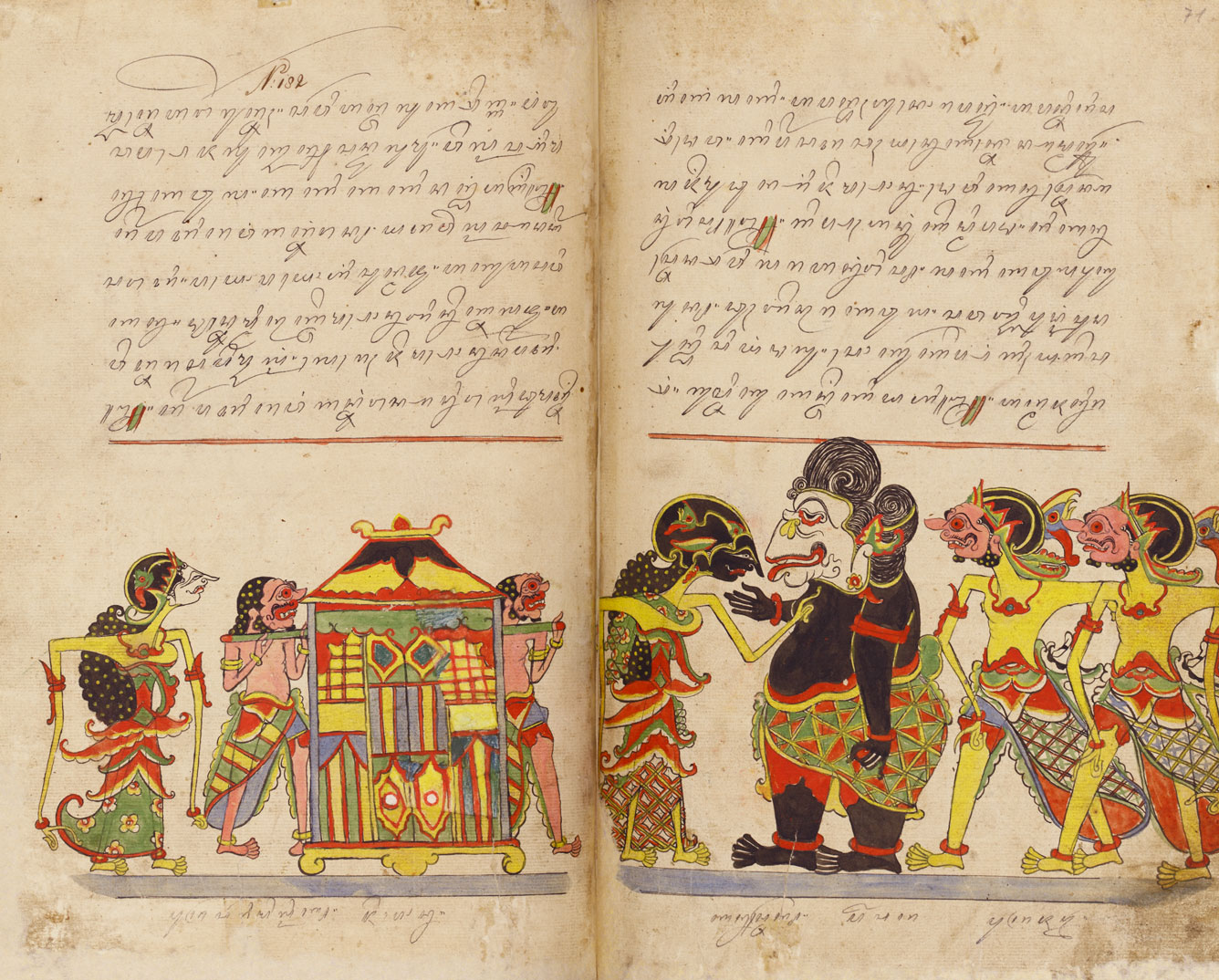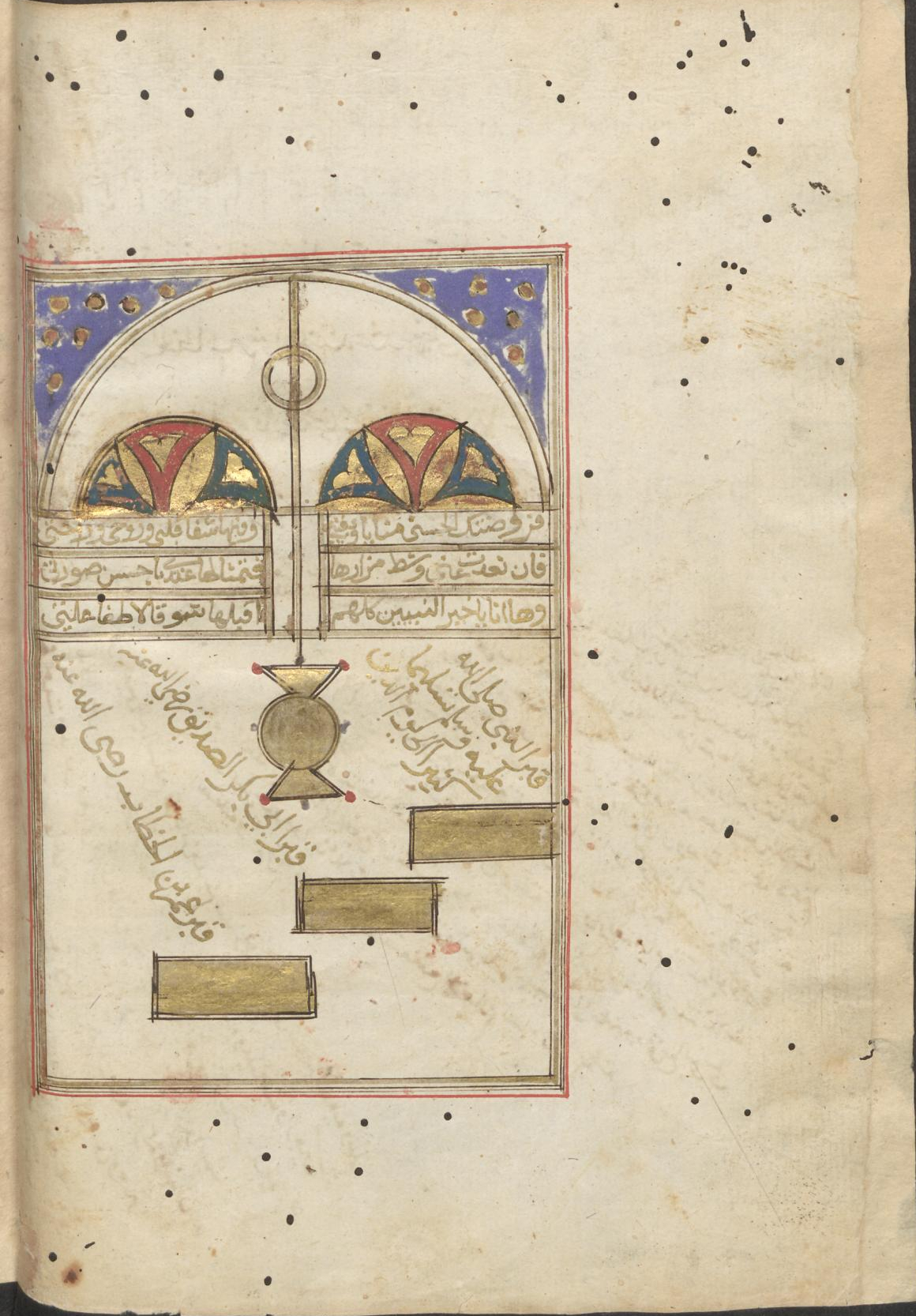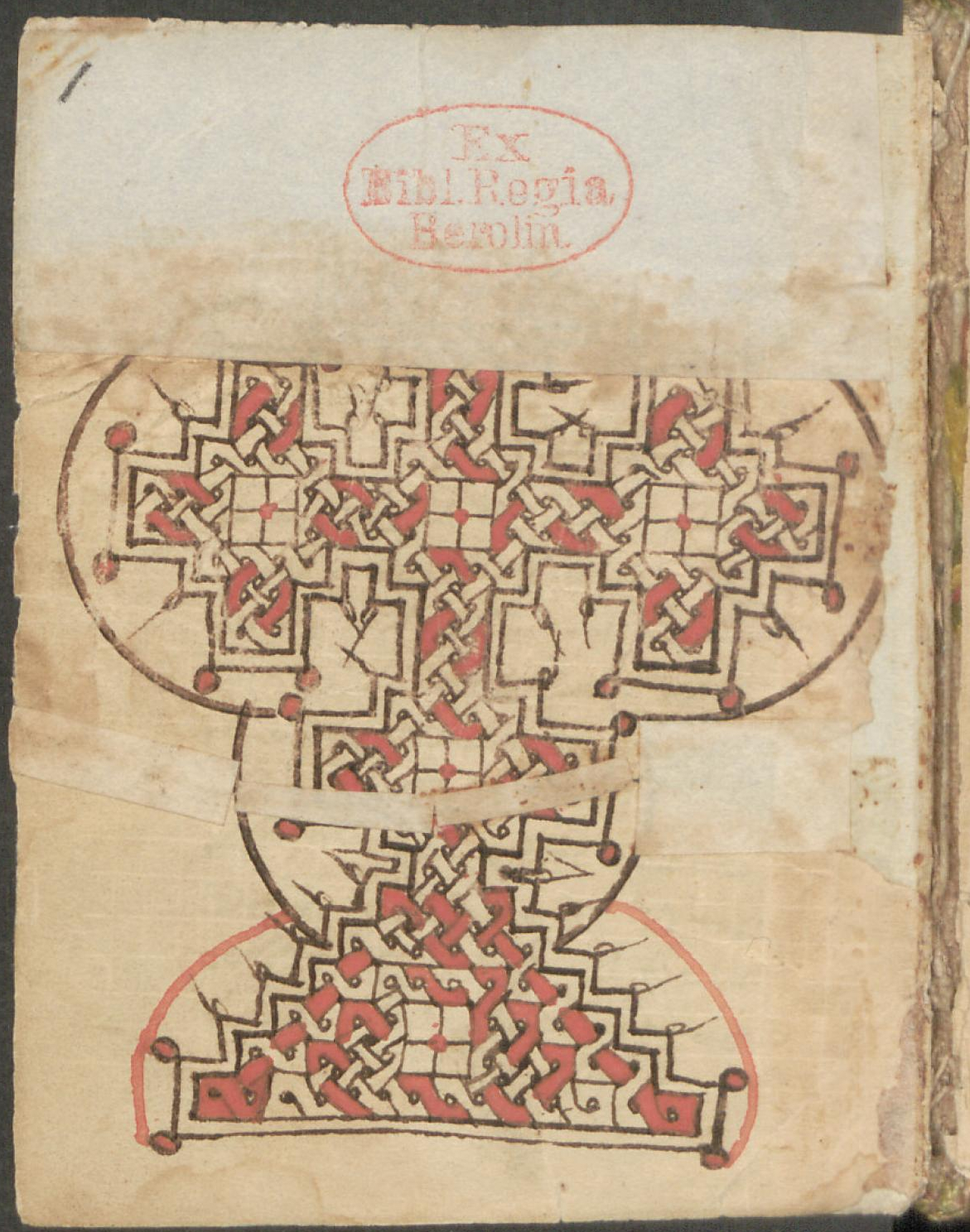11
The Schoemann, Landberg, Sachau, and Petermann Collections
The age of the great collectors of Oriental works
A glimpse into the strongroom of the Orient department: The Petermann collection. SBB-PK / Office for images and photography. CC BY-NC-SA 4.0
Although literature from and about the ‘Orient’ was already part of the foundation holdings of the Churfürstliche Bibliothek, a massive and systematic acquisition of these materials only started in the 19th century. The establishment of Oriental studies as an academic discipline and an awakening, broad interest in the cultures of Asia and Africa were the decisive factors for this development. Furthermore, Prussian cultural policy pursued the aim of promoting the international reputation of Berlin as a place of culture and science. Whole libraries, numerous purchases and donations from scholars, researchers and diplomats came to the library and the result was a world-class collection, the largest in Europe after Paris and London.
The collection of Oriental manuscripts at the Königliche Bibliothek in Berlin grew considerably during the second half of the 19th century. The collection, which included around 2,400 volumes in 1850, had expanded to 13,000 volumes by 1890. The large acquisition of manuscripts, made by Johann Gottfried Wetzstein, Julius Heinrich Petermann, Carl Schoemann, Eduard Sachau, Carlo von Landberg, and others solely for the Königliche Bibliothek, demonstrate Prussia’s ambitions on the world stage. These great collections of the 19th century have shaped the Oriental manuscript collection in Berlin up to the present day.
Before the outbreak of the Second World War, the library owned about 19,370 Oriental manuscripts, the third largest collection of its kind in Europe after Paris and London.
A wedding with an unexpected twist from the Schoemann Collection
This manuscript written in verse tells the story of Prince Jaya Kusuma, a well-known romance on the island of Java. The volume is illustrated with various two-dimensional drawings applying the art of shadow puppetry known as wayang kulit. Written in Javanese script, the book could be borrowed for public lectures or festivals in exchange for a fee. The philologist Carl Schoemann (1806–1877) went to Java for six years in 1845 and collected almost 300 manuscripts in the different languages and scripts of the archipelago, which the Königliche Bibliothek was able to purchase in 1878.
This manuscript from the Schoemann Collection includes colourful illustrations, which tell the story of the legendary war between Prince Panji and the King of Bali. In the second volume the Princess Kanistren (on the left) is forced to marry the fat clown Prasanta (third from the right). However, they end up having a happy marriage for it turns out that in truth the clown is the God Sanghyang Tunggal. The used condition of the manuscript with its popular stories indicates that it was regularly taken out on loan.
From Syria and Egypt to the river Spree: The Landberg collection
Dalāʾil al-ḫairāt (roughly: guide to godly action) by the Moroccan mystic Muḥammad al-Ǧazūlī (died 1465) was extremely popular in large parts of the Islamic world. The book contains prayers dedicated to Prophet Muhammad. In most copies there are pictures of the holy places in Medina and Mecca on a double page. The manuscript is part of a collection of 1,052 Arabic manuscripts collected in Syria and Egypt by the Swedish orientalist Carlo von Landberg (1848–1924) and acquired by the Royal Library in 1884.
Sheet 9v: The Prophet´s Mosque and tombs in Medina
The collection, consisting of mainly works in Arabic and brought together by Carlo von Landberg, still carries the signature „Landberg“ to the present day.
There is a wide spectrum of manuscripts in this collection: Koran fragments in Kufic script from the very beginning of Islam, splendidly illuminated works from the 7th century (according to the Islamic calendar, Hidschra), and numerous undecorated manuscripts, representing the many diverse Islamic teaching traditions.
A treasure trove of Syrian-Christian manuscripts: The Sachau Collection
This small bible was made for the deacon Abbō from Mosul in 1842, based on a note by the scribe in the Mor Ḥananyo monastery near Mardin. Written in Syriac Serto script, it contains the Book of Psalms and other prayers and chants. The manuscript is part of the great collection belonging to the orientalist Eduard Sachau (1845–1930), thanks to whom the Staatsbibliothek in Berlin is in possession of a distinguished collection of Syrian-Christian manuscripts.
Eduard Sachau was appointed Professor of Oriental Studies in Berlin in 1876, where he became head of the Seminar for Oriental languages in 1887. Through Sachau’s efforts, 390 Syrian-Christian manuscripts came to the library in 1884, henceforth known as the Sachau Collection. It includes special items such as old biblical manuscripts on parchment, the great collections of religious poetry from the mountain range Tur Abdin in present-day Turkey, and a magnificent Gospel book from the 13th century.
A journey to the Orient:
The Petermann collection
The undated Ethiopian parchment manuscript probably dates from the 17th or 18th century. It contains two chronicles: Zena Aihud (History of the Jews) and a world chronicle from Adam to the advent of Islam, the so-called Chronicle of Walda Amid, the Egyptian. This manuscript is part of the collection of the Berlin-based professor of Oriental Studies Julius Heinrich Petermann (1801–1876), which includes 1,506 manuscripts and came into the house from the middle of the 19th century.
Open is folio 73r, the beginning of the chronicle of Walda Amid.
In 1852, Julius Heinrich Petermann was asked by King Friedrich Wilhelm IV to travel to the Orient and acquire manuscripts for the Königliche Bibliothek. His journey led him to Damascus, Cairo, Jerusalem, and Isfahan. He recorded his experiences and impressions in detail in a two-volume travel book “Travels in the Orient”. In his book he also described his search for manuscripts and the difficulties he faced in acquiring them. Thanks to Petermann, numerous Persian, Arabic, Armenian, Syrian, and Ethiopian manuscripts were brought to Berlin.






